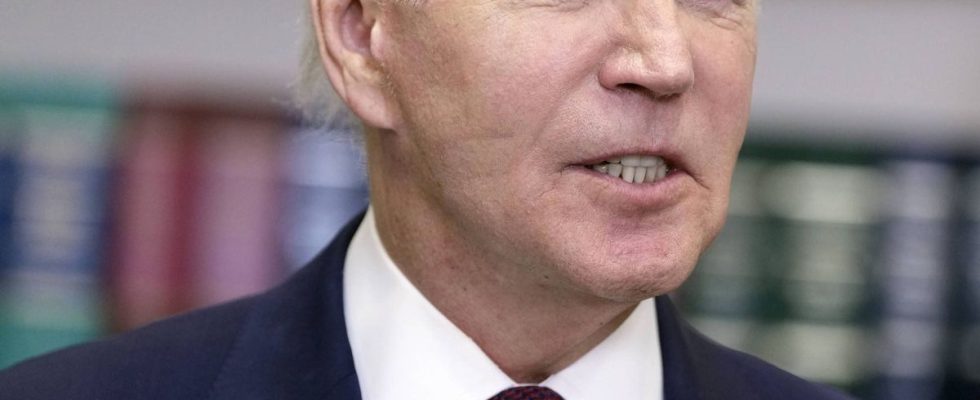Published on
Updated
Reading 3 mins.
The strange marks on US President Joe Biden’s face have sparked curiosity around the world. The White House spokesperson finally explained the cause of these marks: a sleep apnea treatment mask, probably too tight. How should this type of mask be fitted? The answers of Didier Daoulas, president of the Union of independent home health providers (UPSADI).
President of the United States Joe Bien is undergoing treatment for sleep apnea. How do we know? It’s simple: he was betrayed by marks on his face, traces on which the spokesperson for the White House had to speak.
A sleep apnea mask, probably too tight
According to Andrew Bates, Joe Biden is undergoing treatment for sleep apnea syndrome. Joe Biden has “disclosed his history of sleep apnea in numerous medical reportssince 2008, according to the spokesperson. “He used a CPAP machine last night, which is typical for people with that background.” he added.
It is therefore this mask that would have caused these marks on the face of the Democratic president, traces noticed by the reporters who follow him regularly.
What is sleep apnea treatment?
“Sleep apnea usually occurs in obese or elderly people. Fat or sagging tissue closes the upper airway and creates pauses in breathing, which are sometimes long, up to 40 seconds“Explains first of all Didier Daoulas, president of the union of independent home health providers (UPSADI). “This lack of oxygen causing long-term damage to the body and increasing the risk of cardiovascular accidents, it is necessary to treat it. And this requires a mask, to be worn at night“.
The main symptoms of sleep apnea are headaches upon waking, drowsiness and daytime fatigue, irritability… “But the examination that really signs the presence of apnea is polygraphy. This consists of making a recording of the patient’s sleep in order to detect apneas. It is prescribed by a general practitioner or specialist. From 30 apneas per time, the patient will have to be fitted“.
Once sleep apnea has been detected, the doctor prescribes the patient’s device and recommends a home healthcare provider who will install his equipment: a positive pressure ventilation device, connected to a mask via a hose .
There are three types of masks for patients affected by sleep apnea:
- The nasal mask, which covers only the nose, but is not suitable for patients who sleep with their mouth open;
- The face mask, which is positioned over the nose and mouth;
- The nasal mask, which attaches only to the nostrils, like oxygen glasses in the hospital. But it is more rarely used, because it is more uncomfortable, according to Didier Daoulas.
“First, you can try the nasal mask, but if it does not fit, you will have to try the face mask, we are in fact trying to find a fair ratio between the patient’s comfort and the effectiveness of the treatment” adds the president of the UPSADI.
Connected to a small device via a hose, the principle of apnea therapy is to push air into the patient. “These devices work on the reverse principle of a vacuum cleaner. further details the president of the UPSADI. “For maximum effectiveness, the mask must be well adjusted by the four straps that compose it to avoid leaks, without marking the patient’s face”.
What about compliance with this type of treatment?
“For optimal compliance, the treatment must be followed at least four hours continuously each night. Below this period, the treatment is considered not to be effective.“says Didier Daoulas.
“Compliance is something that must be acquired from the start of treatment, which is why the patient benefits from close monitoring for the first three months.“.
How is it monitored? “In France, we are the only ones in the world to have a compliance monitoring system. Since the end of 2017, a system has centralized the anonymized data of the 1.6 million patients with hearing aids. The provider has the obligation to inform them, via an automatic transmission, because he will be paid according to the observance of his patient. It is estimated that 80% of patients have an observance of four hours per night, at least” concludes Didier Daoulas.
